#wildfire
Text
Since the 1960s, the world has seen a spike in the number of natural disasters, largely due to rising sea levels and an ever gradually increasing global surface temperature.
The good news? We’re getting better at helping each other when disasters strike.
According to a recent study from Our World In Data, the global toll from natural disasters has dramatically dropped in the last century.
“Low-frequency, high-impact events such as earthquakes and tsunamis are not preventable, but such high losses of human life are,” wrote lead authors Hannah Ritchie and Pablo Rosado.
To conduct their research, Ritchie and Rosado gathered data from all geophysical, meteorological, and climate-related disasters since 1900. That includes earthquakes, volcanic activity, landslides, drought, wildfires, severe storms, and mass floods.
In the early-to-mid 20th century, the average annual death toll from disasters was very high, often climbing to over a million.
For example, the study cites that in 1931, 2.7 million people died from the Yangtze–Huai River floods. In 1943, 1.9 million died from the Bangladeshi famine of 1943. Even low-frequency events had extreme death tolls.
“In recent decades we have seen a substantial decline in deaths,” Ritchie and Rosado observed. “Even in peak years with high-impact events, the death toll has not exceeded 500,000 since the mid-1960s.”
Why has the global death toll from disasters dropped?
There are a number of factors at play in the improvement of disaster aid, but the leading component is that human beings are getting better at predicting and preparing for natural disasters.
“We know from historical data that the world has seen a significant reduction in disaster deaths through earlier prediction, more resilient infrastructure, emergency preparedness, and response systems,” Ritchie and Rosado explained in their study.
On April 6, [2024],a 7.2 magnitude earthquake rocked the city of Hualien in Taiwan. Days later, as search and rescue continues, the death toll currently rests at 16.
Experts have praised Taiwan for their speedy response and recovery, and attributed the low death toll to the measures that Taiwan implemented after an earthquake of similar strength hit the city 25 years earlier. Sadly, on that day in 1999, 2,400 people died and 11,000 were injured.
In an interview with Al Jazeera, Wang Yu — assistant professor at National Taiwan University — said that event, known as the Chi-Chi earthquake, revolutionized the way Taiwan approached natural disasters.
“There were lots of lessons we learned, including the improvement of building codes, understanding earthquake warning signs, the development and implementation of earthquake early warning (EEW) systems and earthquake education,” said Wang.
Those same sensors and monitoring systems allowed authorities to create “shakemaps” during Hualien’s latest earthquake, which helped them direct rescue teams to the regions that were hit the hardest.
This, in conjunction with stronger building codes, regular earthquake drills, and public education campaigns, played a huge role in reducing the number of deaths from the event.
And Taiwan’s safeguards on April 6 are just one example of recent measures against disasters. Similar models in strengthening prediction, preparedness, and recovery time have been employed around the world when it comes to rescuing victims of floods, wildfires, tornados, and so on.
What else can we learn from this study?
When concluding the findings from their study, Ritchie and Rosado emphasized the importance of increasing safety measures for everyone.
Currently, there is still a divide between populations with high gross national income and populations living in extreme poverty.
Even low-income countries that infrequently have natural disasters have a much higher death rate because they are vulnerable to collapse, displacement, and disrepair.
“Those at low incomes are often the most vulnerable to disaster events; improving living standards, infrastructure, and response systems in these regions will be key to preventing deaths from natural disasters in the coming decades,” surmised Ritchie and Rosado.
“Overall development, poverty alleviation, and knowledge-sharing of how to increase resilience to natural disasters will therefore be key to reducing the toll of disasters in the decades to come."
-via GoodGoodGood, April 11, 2024
#good news#hope#climate change#hope posting#climate news#climate crisis#climate anxiety#climate emergency#natural disasters#disasters#earthquake#wildfire#hurricane#cw death#taiwan#tsunamis#building construction#climate action#climate hope
333 notes
·
View notes
Text
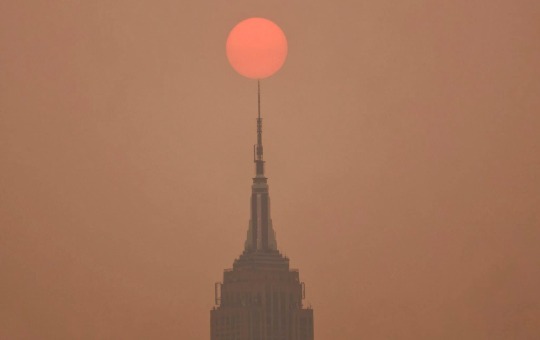
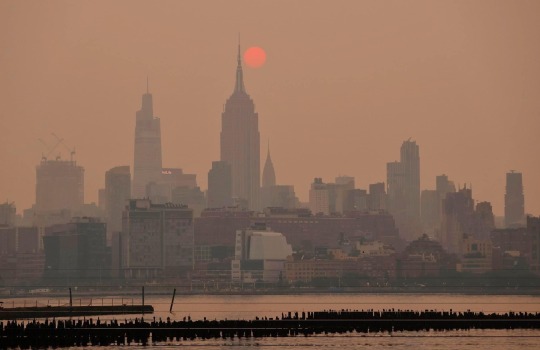

Canadian wildfire smoke creates hazy skies and unhealthy polluted air quality in New York City (2023)
The sun is shrouded as it rises in a hazy, smoky sky behind the Empire State Building, One Vanderbilt and the Chrysler Building in NYC.
10K notes
·
View notes
Text
In 2025 Wikipedia will go under, a wildfire will destroy most of the campus of a local college and the next big Tumblr Sexyman is gonna be an emoji that’s into S+M.
#dream#text#March 7th 2024#prophecy#wikipedia#wildfire#fire tw#fire#campus#college#tumblr sexyman#sexyman#emoji#queueueueueueueueueueueueueue
3K notes
·
View notes
Text

The evacuation prep poster is done! This poster is designed primarily with wildfires in mind, but the tips can apply to preparing for any much any disaster.
If you share this image outside of tumblr, please link back to my website: www.Katy-L-Wood.com
[[Image ID: A poster including a layered graphic showing what items to have ready to prepare for evacuating your home based on how much warning you have that you need to evacuate. The inner, red, level is labeled "No Warning." The next, orange, level is labeled "Less Than an Hour." The next, yellow, level is labeled "More Than an Hour." The final, green, level is labeled "General Preparedness." The items associated with each level and the text are included below. /end ID.]]
----------
Evacuation Prep:
As the world changes, it is important to be prepared to safely and efficiently evacuate your home, potentially with little or no warning. Preparing ahead of time can help to reduce stress and anxiety, and help you evacuate safely if the time comes.
Red Level (No Warning): People | Pets | Keys. Human life matters most. If you can't rescue your pets, let them out to give them their best chance. If evacuating by car, don't forget your keys.
Orange Level (Less Than an Hour): Crucial Meds | Important Papers | Money | Paper Map | Pet Vaccination Records. Crucial meds and medical equipment. Papers including passports, birth certificates, medical records, etc.. Multiple forms of payment. Paper map with marked evac routes in case of signal loss. Phone. Most evac centers require vaccine records for pets to be allowed in.
Yellow Level (More Than an Hour): Photos | Hard Drives | Computers | Chargers | Irreplaceable Items | OTC Meds | Pet Supplies | Pet Food | Clothes | Weather Gear. Family photos. Hard drives and computers. Make digital backups ahead of time. Charging cords. Irreplaceable items such as collectibles and mementos. Over the counter medical supplies such as Aspirin and tampons. Pet supplies such as bowls, crates, toys, and litter. Pet food and treats. Clothes. If you are running out of time grab your laundry basket. Weather gear if needed.
Green Level (General Preparedness): Food | Water | Radio | N95 Masks | Multitool | Power Pack | Gas | Stove + Fuel | Flashlight | Toiletries | Emergency Contact Info | Bedding | First Aid | Can Opener. Easy prep, shelf-stable food. Water. Battery powered/rechargeable NOAA weather radio. N95 masks for smoke. A multitool. Rechargeable power pack for phones. Keep your car at least partially fueled at all times. Portable stove and fuel for cooking food without power. Flashlight and spare batteries. Toiletries including hair products, toothbrush and paste, etc.. Emergency contact info for friends and loved ones. Spare pillows and blankets. Dedicated first aid kit. Can opener.
Save yourself time and stress by preparing an evacuation bag ahead of time and keep it in an easy to access place. At the end of every season rotate out the perishable items within such as food, water, and medications. The more you can keep in the bag, the more time you'll have to grab everything else. Remember, it is okay if you can't do everything. Some preparation is better than no preparation.
If you are in the U.S.A. and experiencing disaster related anxiety call the Disaster Distress Hotline at 1-800-985-5990 for support and resources.
----------
If you share this image outside of tumblr, please link back to my website: www.Katy-L-Wood.comf
#Natural Disasters#Wildfire#Survival#Survival Tips#Wildfire Evacuation#Evacuation Tips#Survival Tips Poster#My Art#Original Art#Graphic Design
45K notes
·
View notes
Text



If you are on the East Coast and trying to figure out what all of these air quality warnings mean and what you should do, here is what the colors and corresponding AQI numbers mean. The updated AirNow map is at this link:
Edit: this was posted at 10:50am on June 6 2023 and the screenshots were taken around 9am.
2K notes
·
View notes
Text

We need climate action.
Digital illustration of a blonde woman wearing a mask facing the New York City skyline. She is standing on a fire-escape wearing a tan dress that reads, ‘climate change is a public health crisis.’
#art#feminism#feminist#illustration#climate change#clean air#wildfire#canada wildfires#air quality#climate action#climate crisis#public health#environmental justice
2K notes
·
View notes
Text
Massive fires in Texas spanning 60 Counties and fake news is blaming climate change. 🤔
#pay attention#educate yourselves#educate yourself#knowledge is power#reeducate yourself#reeducate yourselves#think about it#think for yourselves#think for yourself#do your homework#do some research#do your own research#ask yourself questions#question everything#texas#wildfire#you decide
345 notes
·
View notes
Text


your dog looks gnc as fuck
655 notes
·
View notes
Text
the smoke from the wildfires in canada are crossing the atlantic and is now bringing a haze to the nordic countries
it's said that the soot from the smoke will deposit onto the snow and ice of the arctic which will in turn increase local warming (i.e worst wildfires, ice sheets melting, oceans warming and rising, stronger tropical cyclones, etc. etc.)
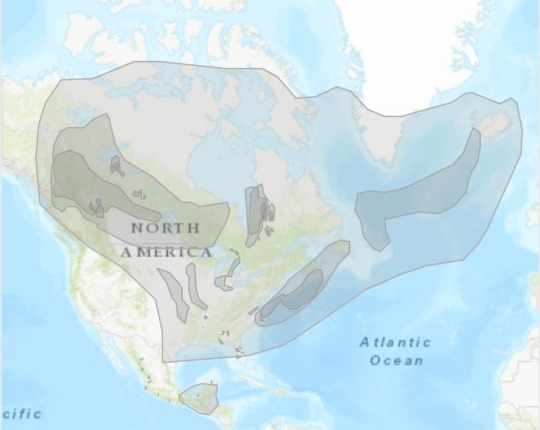
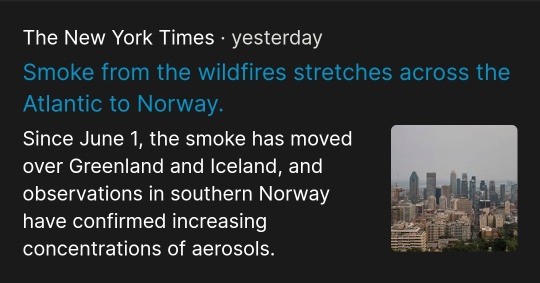
From the NY Times (and other sources):
Ways to Help
The Canadian Red Cross: Every $1 donated to the Canadian Red Cross will become $3 to support those affected by wildfires. The funds will be directed to people living in Nova Scotia and other Atlantic provinces, some of the hardest hit areas, for immediate and ongoing relief and recovery efforts as well as community preparedness initiatives.
United Way: The Canadian federal government joined the government of the Northwest Territories in a similar matching program to support disaster relief and recovery efforts. The funds will be used to support nonprofit community groups who are helping local residents.
Donate a Mask: This volunteer-run charity ships free N95-equivalent masks to anyone in Canada who requests them, with priority to Canadians who cannot afford or do not have access to high-quality masks.
Firefighters Without Borders: This Ontario-based nonprofit donates equipment and training to communities across Canada and in other countries.
Odawa Native Friendship Centre: The Odawa NFC is a nonprofit organization serving the Indigenous community in the Ottawa-Carleton region and is currently collecting donations for First Nation evacuees (with “wildfire evacuees” as the donation type). On Facebook, the NFC noted that it can no longer accept clothing donations.
Canadian Interagency Forest Fire Centre (CIFFC): Live map of the fires. Updated daily.
APTN National News: Newspaper on the Indigenous Peoples of Canada. Can be used to understand how the climate is affecting the Inuit, Métis, and First Nations.
#canadian politics#canadian wildfires#canada#wildfire#wildfires#fire#climate change#environmentalism#mutual aid#mutual assistance#weather#meteorology#academia#studyblr
2K notes
·
View notes
Text
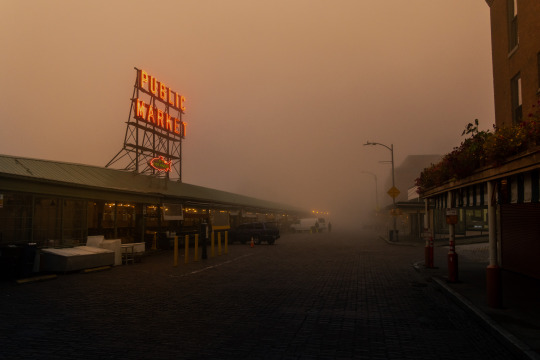




sunrise // wildfire season - September 2020, of course the year got weirder and weirder, why wouldn't it? major wildfires in Canada turned the sky bright orange for a day - it was truly eerie
341 notes
·
View notes
Text
Ancient redwoods recover from fire by sprouting 1000-year-old buds
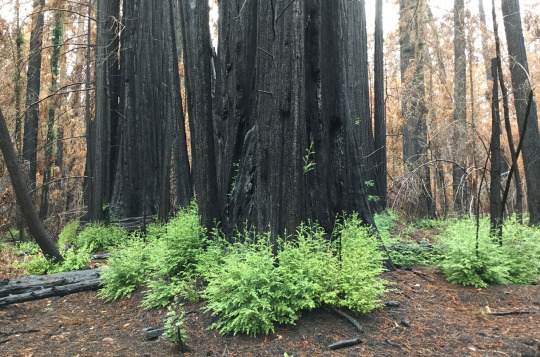
Article | Paywall free
When lightning ignited fires around California’s Big Basin Redwoods State Park north of Santa Cruz in August 2020, the blaze spread quickly. Redwoods naturally resist burning, but this time flames shot through the canopies of 100-meter-tall trees, incinerating the needles. “It was shocking,” says Drew Peltier, a tree ecophysiologist at Northern Arizona University. “It really seemed like most of the trees were going to die.”
Yet many of them lived. In a paper published yesterday in Nature Plants, Peltier and his colleagues help explain why: The charred survivors, despite being defoliated [aka losing all their needles], mobilized long-held energy reserves—sugars that had been made from sunlight decades earlier—and poured them into buds that had been lying dormant under the bark for centuries.
“This is one of those papers that challenges our previous knowledge on tree growth,” says Adrian Rocha, an ecosystem ecologist at the University of Notre Dame. “It is amazing to learn that carbon taken up decades ago can be used to sustain its growth into the future.” The findings suggest redwoods have the tools to cope with catastrophic fires driven by climate change, Rocha says. Still, it’s unclear whether the trees could withstand the regular infernos that might occur under a warmer climate regime.
Mild fires strike coastal redwood forests about every decade. The giant trees resist burning thanks to the bark, up to about 30 centimeters thick at the base, which contains tannic acids that retard flames. Their branches and needles are normally beyond the reach of flames that consume vegetation on the ground. But the fire in 2020 was so intense that even the uppermost branches of many trees burned and their ability to photosynthesize went up in smoke along with their pine needles.
Trees photosynthesize to create sugars and other carbohydrates, which provide the energy they need to grow and repair tissue. Trees do store some of this energy, which they can call on during a drought or after a fire. Still, scientists weren’t sure these reserves would prove enough for the burned trees of Big Basin.
Visiting the forest a few months after the fire, Peltier and his colleagues found fresh growth emerging from blackened trunks. They knew that shorter lived trees can store sugars for several years. Because redwoods can live for more than 2000 years, the researchers wondered whether the trees were drawing on much older energy reserves to grow the sprouts.
Average age is only part of the story. The mix of carbohydrates also contained some carbon that was much older. The way trees store their sugar is like refueling a car, Peltier says. Most of the gasoline was added recently, but the tank never runs completely dry and so a few molecules from the very first fill-up remain. Based on the age and mass of the trees and their normal rate of photosynthesis, Peltier calculated that the redwoods were calling on carbohydrates photosynthesized nearly 6 decades ago—several hundred kilograms’ worth—to help the sprouts grow. “They allow these trees to be really fire-resilient because they have this big pool of old reserves to draw on,” Peltier says.
It's not just the energy reserves that are old. The sprouts were emerging from buds that began forming centuries ago. Redwoods and other tree species create budlike tissue that remains under the bark. Scientists can trace the paths of these buds, like a worm burrowing outward. In samples taken from a large redwood that had fallen after the fire, Peltier and colleagues found that many of the buds, some of which had sprouted, extended back as much as 1000 years. “That was really surprising for me,” Peltier says. “As far as I know, these are the oldest ones that have been documented.”
... “The fact that the reserves used are so old indicates that they took a long time to build up,” says Susan Trumbore, a radiocarbon expert at the Max Planck Institute for Biogeochemistry. “Redwoods are majestic organisms. One cannot help rooting for those resprouts to keep them alive in decades to come.”
-via Science, December 1, 2023
#redwoods#california#wildfire#climate change#extreme heat#natural disasters#botany#plant biology#photosynthesis#santa cruz#hopepunk#sustainability#climate hope#united states#good news#hope
11K notes
·
View notes
Text
I'm surprised I haven't seen any info posts about it yet but please have your hearts out for the wildfires in Hawaii. Towns have been abruptly destroyed in fast-moving fires and resources/firefighting aid have been difficult to deliver due to hurricane winds. When I wrote this 6 people were confirmed dead and within a day that count has already climbed to 36 (Thurs, 8/10/23).
I haven't been able to find any places to lend support to except some sources saying that the Maui Mutual Aid Fund is responding (but that may be because it's too soon for groups to organize support funds since afaik these wildfires sprouted out of nowhere in the span of 2 days), so please keep an eye out and share if you know of places to lend support
405 notes
·
View notes
Text
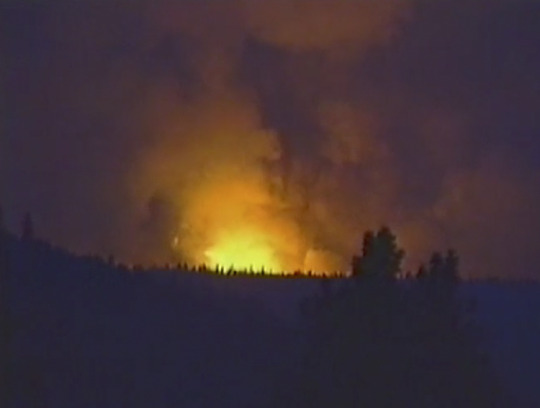
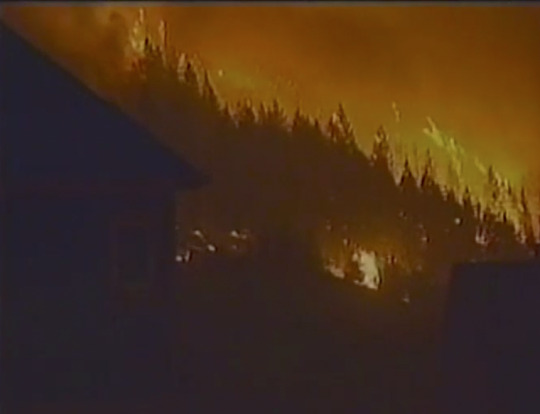

wildfire on vhs
kelowna, british columbia, 2003
#kelowna#british columbia#canadian gothic#canada#small town canada#wildfire#fire#wild fire#forest fire#2003#vhs#vhs aesthetic#y2k
364 notes
·
View notes
Text
“Forgiving people who repeatedly let you down is like sticking your hand in a fire over and over and expecting it to not keep burning you.”
Wildfire - Hannah Grace
#wildfire Hannah grace#love#books and libraries#book blog#booklovers#books#book quotes#your nightmare brain#bookaddict#booklr#books and reading#mine#book quote#wildfire#icebreaker#icebreaker Hannah grace#romance books#friends to lovers
270 notes
·
View notes
Text
New fire start just west of Boulder. Sounds like it started as a house fire. There are evacuation notices going out. Winds are peaking at 44mph right now.
Good luck to the firefighters and stay safe everyone.
It is being called the Sunshine Canyon Fire. Despite it's current chaotic nature, Twitter has good updates.

2K notes
·
View notes
Photo

Searching for Survivors - RHADS (Artem Chebokha)
#Searching for Survivors#RHADS#Artem Chebokha#flight#wildfire#wings#creatures#myths#fantasy art#digital art
3K notes
·
View notes